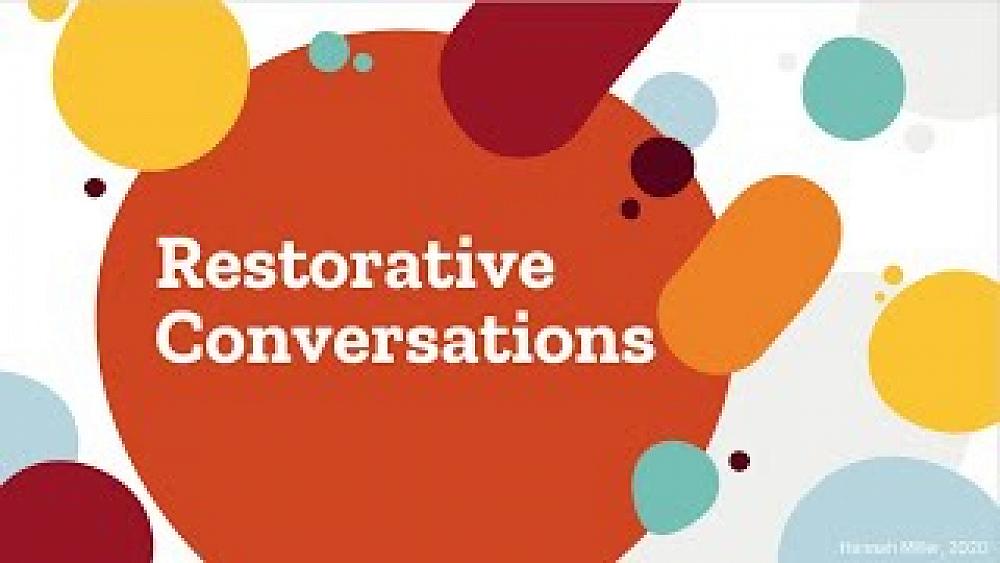
Restorative Conversations
Westland High School prides itself on being a fair and inclusive school in which people are respected and positive in their interactions with others.
Westland High School prides itself on being a fair and inclusive school in which people are respected and positive in their interactions with others. To that end, we endeavour to use a positive behaviour and restorative approach to solve problems within the school, aiming to address the issue and protect the mana of those involved.
Restorative conversations are an effective way of working through problems with the expectation that problems can be successfully resolved and relationships restored.
Restorative conversations typically involve; a). discussing what happened factually (tell the story), b). considering who might have been affected (explore the harm), c). what needs to be done to put things right (repair the harm), and d). how to ensure that it doesn’t happen again (move forward).
Restorative conversations can be with students, their classroom or Whānau teachers or duty staff. They might also involve the students, their parents, Academic and Pastoral Leaders (APL), the Deputy Principals or the Principal. Restorative conversations could be between students themselves, or with a senior student. The focus of the conversation is on finding solutions and how to do better in the future. All students are encouraged to resolve their issues and differences in a positive and respectful way.
Restorative conversations acknowledge that people do make mistakes, that the people can learn from those mistakes, how to avoid making that mistake in the future, and that things can be put right. Restorative conversations address poor decisions and behaviours, whilst aiming to preserve peoples’ dignity and mana; and to realise the potential of the people to be better than the behaviour.
Restorative conversations can sit alongside consequences like daily reports, exclusion from events and opportunities, restorative conferences, and in serious cases, stand downs.
Stand down or Suspension: What’s the difference?
Stand downs and suspensions are mechanisms of last resort for schools. This occurs when a student is risking serious harm for themselves or others; or have been continually disobedient.
Stand down is the formal removal of a student from school for a specified period. It can be a duration of up to five days, the student is not allowed to attend school for that period of time, but is expected to continue with their learning (through their class learning sites). If a student exceeds more than five stand down days in a term or more than ten stand down days in a year, then the student would be suspended. The Principal makes the decision to stand the student down because of their behaviour.
At the end of the stand down the student returns to school; has a return to school meeting and conditions, like a daily report for example, may be put in place to support the student to be successfully returned to school.
Suspension is the formal removal of a student from school until the Board of Trustees decides the outcome at a suspension meeting. The decision to suspend is made by the Principal, after an investigation inclusive of conversations with any parties involved, but the Board makes the decision on the outcome from the student’s behaviour. The student and parents / caregivers are able to attend the suspension meeting. The Board may decide to lift the suspension, lift the suspension with conditions, ask for further information, or choose to exclude or suspend the student depending on their age. When a student returns to school from suspension, supports are put in place to assist in behaviour change and reintegration into school.
